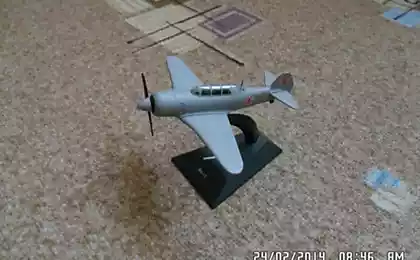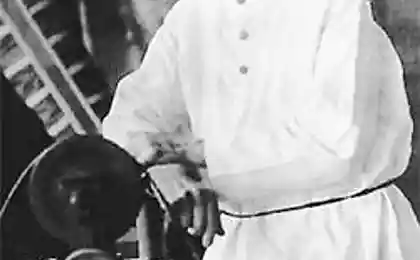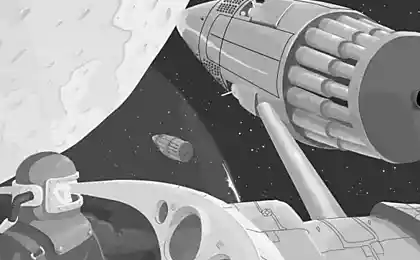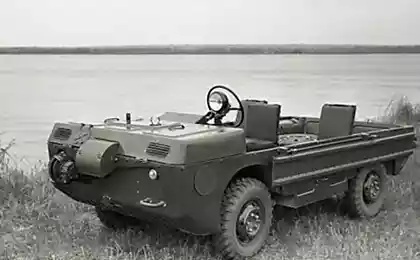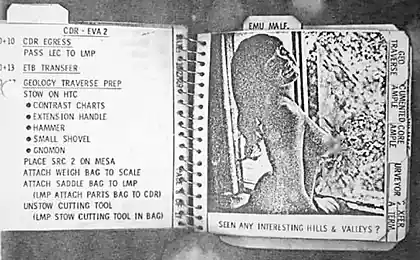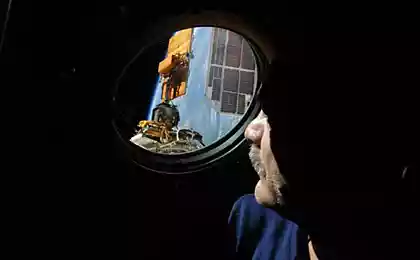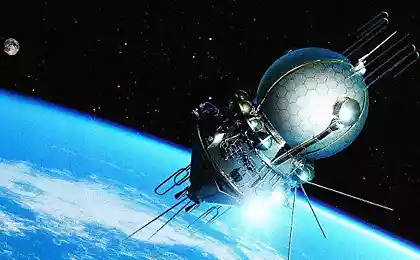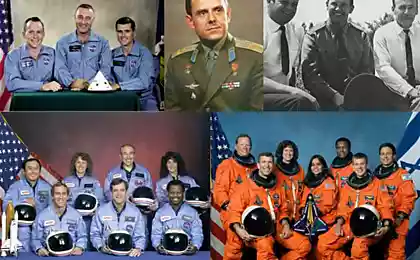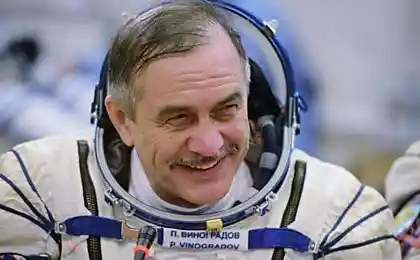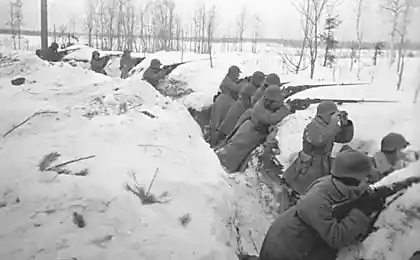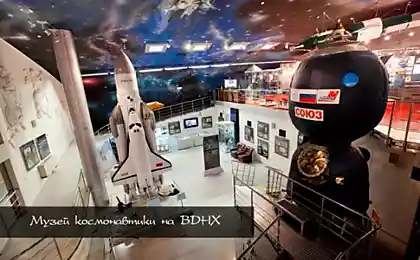1237
Soviet Space in the work of Soviet cosmonauts (38 photos)
I liked it.
- Documentaries cosmonaut Leonov and his friend Sokolov. This is the real picture of space, much of which is drawn a person who saw the cosmos with their own eyes. This is not a pseudo-scientific nonsense ignorant Americans and illustrated scientific predstavleniyanashego recent past. Each painting is technically verified iosnovana on a strictly scientific concepts.
This is not fantasy, but an eyewitness - a person sees as the Cosmos and that's what was our - Russian Soviet Way to the Stars.
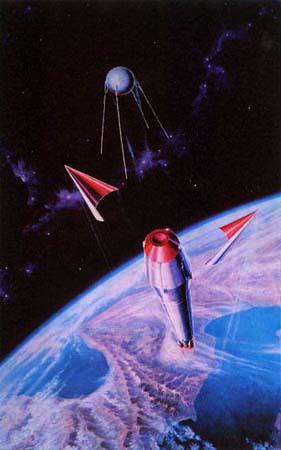
Sokolov SUNRISE man-made star - the first satellite went into orbit
Release of man-made stars in orbit. It will take a little more time after separation from the last stage of the launch vehicle fairing and reset, and the satellite will take up the planned program of research and experiments. Call Sign satellite will soon hear the whole world and the wider world will know the Russian word "Sputnik".
Sokolov is finished!
The first artificial Earth satellite went into orbit and oriented in space. Mankind in Space.
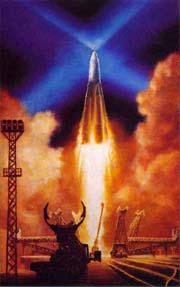
Sokolov MORNING SPACE AGE
That was the start of the first satellite - the result of the work of tens of thousands of Soviet people and brilliant economic and scientific planning.
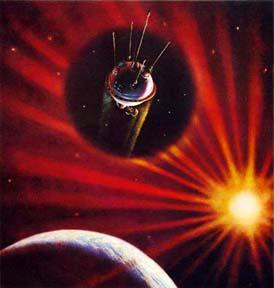
Sokolov artificial planet "DREAM»
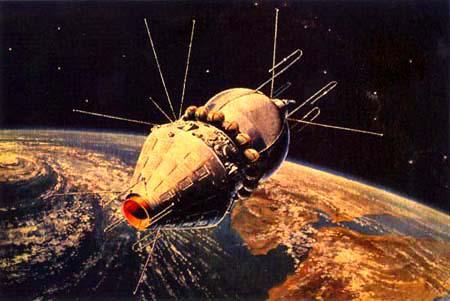
Leonov, A. Sokolov
"East" of the planet
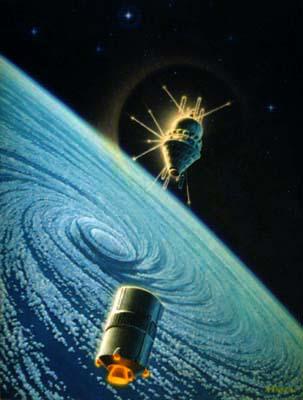
Sokolov Leonov Gagarin "Beauty is what!»
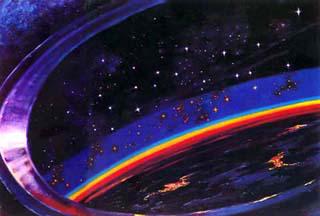
Leonov BLUE ZONE
This phenomenon is observed and sketched from nature cosmonaut Leonov: rainbow halo over the wide, sharply defined zone stretches over the horizon a bluish layer. And through a translucent reddish stars. What is this phenomenon - is not clear.
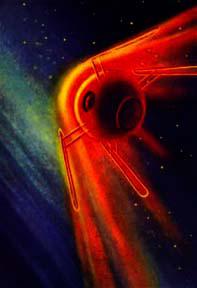
Leonov space probe returns to Earth
The descent from orbit is very complicated: melting outer skin, bright red fire burning behind the glass windows, burned the radio antenna, growing congestion, and inside of the ship - a man.

Leonov ahead of the Earth
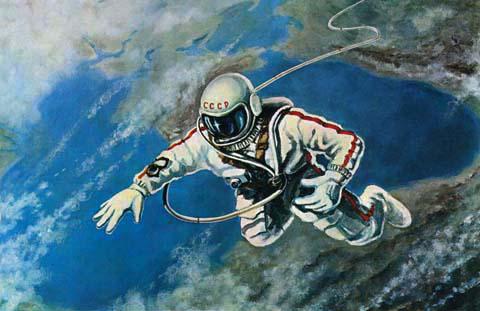
Leonov above the Black Sea
Another unusual "self-portrait" cosmonaut Alexei Leonov - he came out of the gateway spacecraft into space just above the Black Sea.
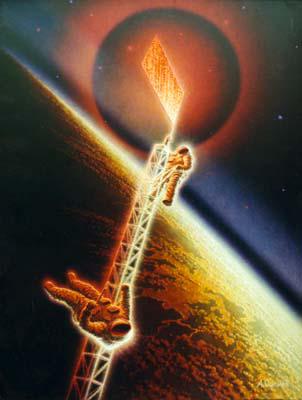
Sokolov HIGHEST HOMELAND FLAG
All nearest celestial bodies - the Moon, Mars, Venus was the first time in history reached ssovetskimi spacecraft.
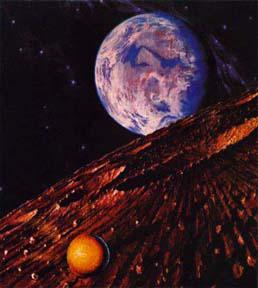
Sokolov FIRST ON THE MOON
September 14, 1959 for the first time in history a spacecraft has reached the surface of another celestial body - station "Luna 2" made a hard landing on the lunar surface east of the "Sea of Serenity", near the craters Aristides, Archimedes, and Autolycus.
"Luna 2" brought to the moon pennant with the emblem of our country and the inscription: "The USSR, in September 1959". Then the Moon was launched by a number of Soviet automatic stations series "Luna", which prepared the solution of a soft landing of the container with scientific equipment.
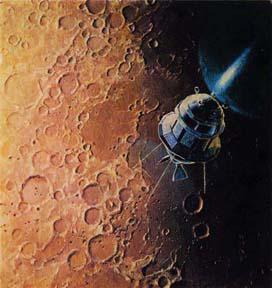
Sokolov MOON PHOTOGRAPHER
October 6, 1959. Near Moon - automatic station "Luna-3". The optical system of the station good "looks" side of the moon, hidden from the terrestrial observer. The first was carried out and a television picture transmission distances of hundreds of thousands of kilometers.
Tremendous prospects opened up astronomy, which had the opportunity to bring their devices to the heavenly bodies. Hidden from the people side of the Moon was also similar and unlike the previously known side. On the reverse side of the moon dominates the continental shield with a high density of craters and no vast "sea" areas specific to the visible side of the Moon.
After the flight, "Luna-3" was still nesfotografirovannym segment was out of sight of camera lenses. This part of the moon photographed station "Zond-3" in 1965, which allowed our scientists to develop the first globe of the moon.
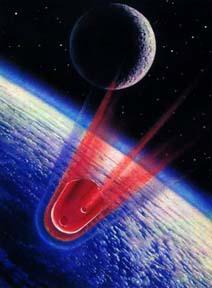
Leonov RETURN PROBE
Automatic station series "Probe" occupy an important place in the Soviet space program, station igralya role of test benches, but who are experiencing various components of spacecraft and perfected modes of flight, which is expected in future developments and projects overshenstvovaniya methods of navigation in deep space. In particular, several stations "Probe" circled the moon and photographed its reverse side with a soft landing and return the unit returned to Earth for devices with high speed. Such a mission was at the station "Zond-S» - «Zond 8" launched into circled the moon in order to develop technical means of research on the flight path, photographing the Moon. The return of these stations was conducted in two slopes: ballistic, with a splashdown in the Indian Ocean, and managed, with landing on the territory of the Soviet Union. The return of one of the "probe" and shown in the picture.
The device with the escape velocity enters the Earth's atmosphere, then portion of braking, where the rate will be significantly reduced. In a couple of minutes, it will open the parachute system - and "probe" will make a soft landing.
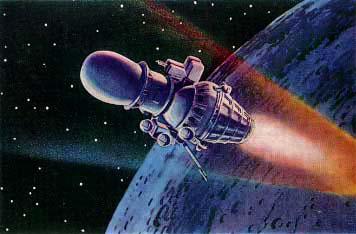
Sokolov Luna 4 start of braking
Several spacecraft from the station Luna 4 practiced technique soft landing on another cosmic body.
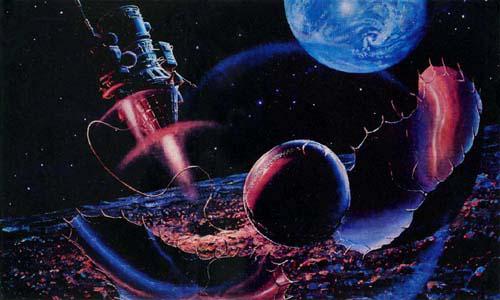
Sokolov soft landing station Luna-9
February 3, 1966 Soviet automatic station "Luna-9" for the first time in the history of implemented soft landing on another cosmic body - the moon. With the help of a television system installed on the station in the world have taken pictures of the lunar surface. First.
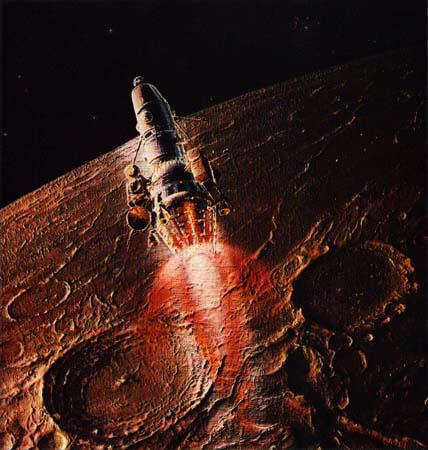
Sokolov first lunar SATELLITE
The solution of some problems of the science of the moon required a long stay near the Moon instrumentation and coverage measurements of significant spaces. And our natural satellite had its own satellite. This happened in April 1966 when the lunar orbit was deduced Soviet automatic station "Luna-10".
The satellite weighing 245 kilograms of moon represented a sealed container carrying the scientific equipment. Over 450 rpm, which makes satellite around the moon, science has a lot of new information about the gravitational and magnetic fields of the Moon, on the preliminary composition of the lunar soil and the radioactivity of the magnetic loop of the Earth, which has repeatedly provided to the moon with her companion.
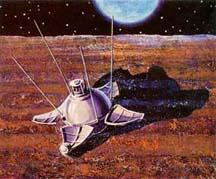
Leonov, A. Sokolov MOON FLOWER
Eternal witness stayed on the Moon near the Ocean of Storms Soviet "flower" - "Luna-9" to reveal the petals of transmit antennas at the beginning of 1966
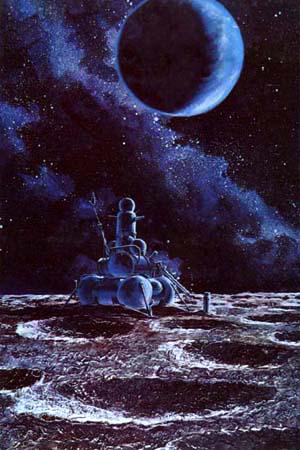
Leonov, A. Sokolov, "Luna-16" - space geology
Electric drill, controlled by commands from Earth, cutting into the lunar soil. Another few minutes, and a sample of rock from another celestial body is moved by the will of man to the container space rocket that will take her to the ground. This historic event took place in September 1970.
"Luna-16" - the prototype of the automatic stations, which in the future will be to explore the moon and planets in different areas, pick up rocks from different depths and bring to Earth a substance with other celestial bodies.
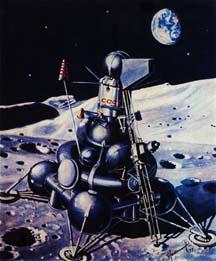
Leonov BUR EXPLORING THE SEA OF ABUNDANCE
September 12, 1970 to our natural satellite has gone Soviet automatic station "Luna-16" with a landing stage, the drilling rig and space rocket launch for the return.
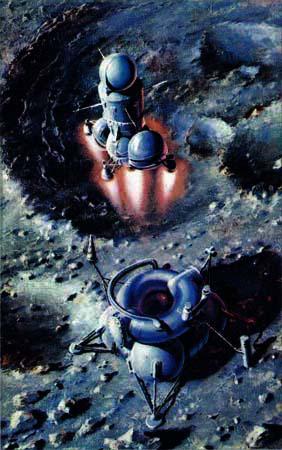
Sokolov "Moon" starts with the Moon
Made a soft landing in the "Sea of Fertility", the station made the drilling of rocks, removed the samples of lunar soil, pack them in an airtight container, and then launched from the Moon to the Earth. This exciting moment, and captured on film. The Moon is forever remained lander, a sort of witness this important step in the development of the Soviet space automation. Lunar soil a few days later he entered the order of scientists who were waiting with great impatience.
Note that in February 1972 the station "Luna-20" once again made the delivery of the soil from the moon, but this time from a more remote places in the mountainous region. If the drill station "Luna-16" deep in the lunar rocks by 35 centimeters, the drilling of the lunar soil at the station "Luna-24" in August 1976 was carried out in the "Sea of Crises" at a depth of about two meters. Eight strips of dredge device fundamentally new design, as the hose, cover the soil column intake as you move into the interior of the drill bit rock. After the end of the drill pipe, and with these tapes particulate soil wound onto the drum, and the drum-like reel with cable was placed in a sealed vial recovery vehicle. There is no doubt that the tried and tested in practice, delivery method of soil by automatic means promising.
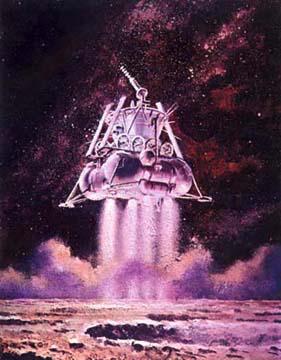
Leonov, A. Sokolov Lunokhod TO THE MOON
November 1970. In the annals of space exploration entered a new bright page: the Moon makes a soft landing Soviet automatic space station "Luna-17". After several days of flight and complicated maneuvers carried out in the region near the Moon, "Luna-17" sank on the moon and brought to the world's first self-propelled machine Space Research "Lunohod- 1».
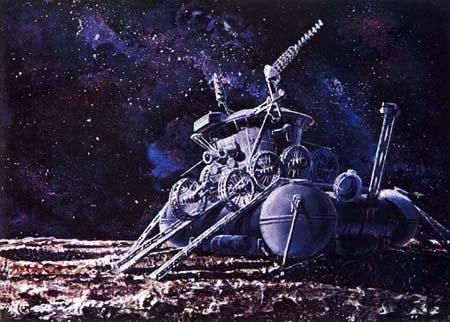
Leonov, A. Sokolov FIRST STEPS "Lunokhod-1»
"Luna-17" made a soft landing on the lunar surface illuminated by the sun. 28 9:00 Moscow time on 17 November 1970. Mare Imbrium. From the landing stage station on a special ramp on the moon goes automatic self-propelled machine "Lunokhod-1».
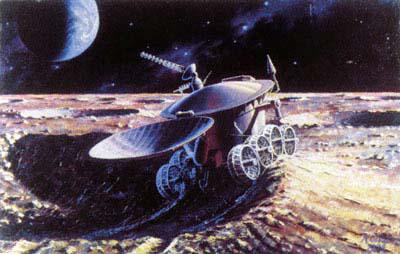
Sokolov THROUGH Crater
The crew, which controls the movement and the work of the rover from Earth, skillfully leads from a distance of about 400,000 kilometers of self-moving vehicle through obstacles.
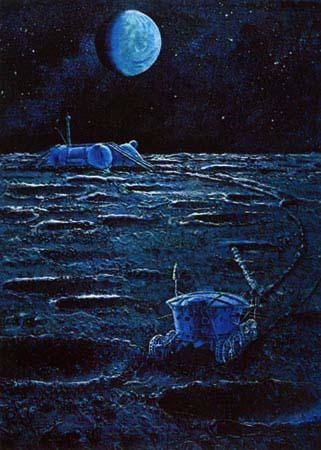
Leonov, A. Sokolov, the first night of the "Lunokhod-1»
Having successfully completed the first phase of a unique space experiment on the creation and use of lunar transportation system. We passed a few hundred meters over rough terrain through the craters, ridges and lunar rocks. On the land is transferred to a large volume of scientific information.
On the moon, it was night. Lunokhod installed in a stationary position-oriented, the solar panel is closed. Environmental conditions are harsh: on top of the Lunokhod - "black" and "cold" space on the lunar surface temperature of minus 140 degrees and in the instrument compartment moonwalker - earth, "room" temperature - isotope heaters work there ...
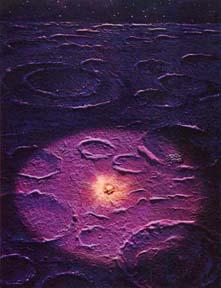
Sokolov lunar laser ranging
On the night of the moon, only the faint light reflected by the Earth, falls on the surface. But a powerful laser beam sent from Earth, cutting through the darkness and cold of space, a second later reached a special reflector mounted on the Lunokhod and reflected back to Earth. Scientists determine the exact distance between the Earth and the Moon. Now it is necessary to clarify the laws of motion of celestial bodies, the theory of motion of the moon ...
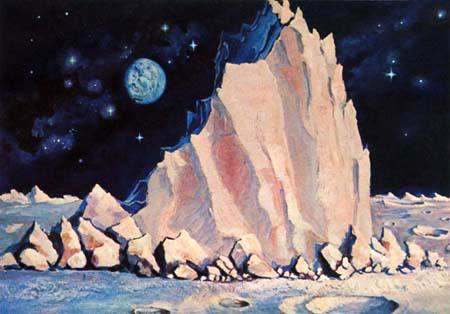
Leonov MOON PIC
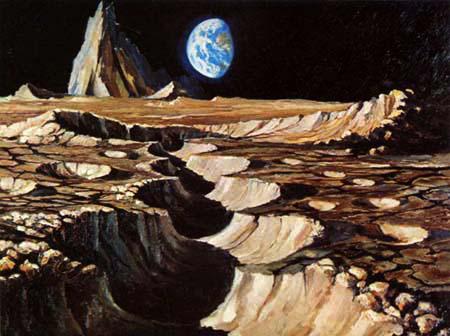
Leonov crater CHAIN
One of the mysteries of the lunar surface - rather numerous crater chains. They can be seen from Earth through telescopes. Some of these conversations reveal a pattern: each successive area of the crater in the chain is approximately half the area of the previous one. The distance between the centers of the craters are also subject to the laws, close to a geometric progression.
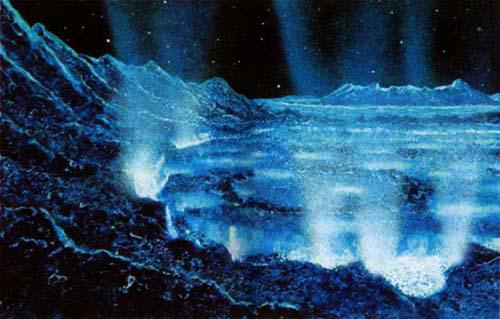
Leonov, A. Sokolov MOON luminescent
Magical glow observed at times in some areas of the moon, not a fantasy artists. Apparently, the brief flash of light, the appearance of the lunar surface changes color of dark spots Finally, luminescence, shown in the picture - is the result of the bombardment of the lunar surface flow of plasma ejected from the sun during flares.
Perhaps the solar particles reach the Moon, "stimulate" certain lunar minerals, and then the energy emitted by them in visible light.
Mars and Venus
The next step after the Moon, began the study of Mars and Venus - the surface for the first time in the world reached the Soviet space station.
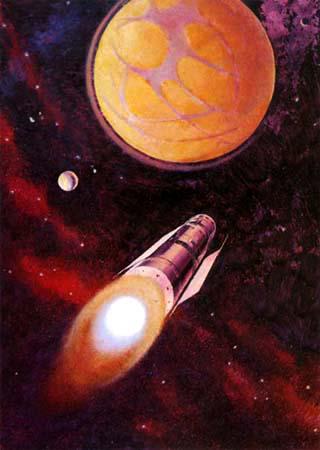
Sokolov AHEAD - MARS
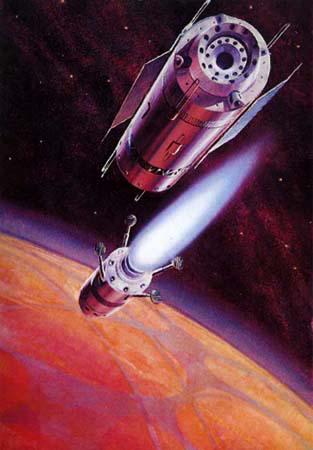
Leonov, A. Sokolov landing on Mars
The lander station for the first time in history in December 1971 made a soft landing on the surface - "Mars-2", soon followed by a successful "primarsilsya" his twin - "Mars-3". Their orbital compartments were the first in the history of artificial satellites of Mars, which were simultaneously repeater stations for landers.

Sokolov soft landing on Mars
Landing on Mars system, created in the world - this is our date. Many more sophisticated devices, breaking the abyss of cosmic distances, time and time again will storm Mars. The spacecraft sent from Earth, will explore the mysterious planet to seek answers to the question "Is there life on Mars? Do I have to fly a man? »
And if it appears necessary, then to Mars will take the start of manned spacecraft. Until then it will be thoroughly studied automatic machines.
"Venera-1" and "Venera-2" were fired for "exploration path" 12.2.1961g respectively. and 12.11.1965g. The spacecraft "Venera-3" was launched on 11.16.1965 "Venera-3" has already had on its board lander. Landing on the planet's surface was provided with the help of a parachute system. On board this device, as in the case of the first "honesty" and "Mars", directed for the first time in the world to the surface of another celestial body was a pennant with the emblem of the Soviet Union. 01/03/1966 spacecraft has reached the surface of Venus, having carried out the world's first flight to another planet. However, the conditions of Venus proved to be extremely hard - to the surface of melted lead. The monstrous pressure and temperature brought "Venera-3" and "Venus-4" from the system. Fully successful was only a soft landing "Venus-5", but she sat up in the mountains, and the "classical" planet's surface has already reached "Venera-7" of course, the first time in history.
All other triggers our "Venus" 8-12 was completely successful.
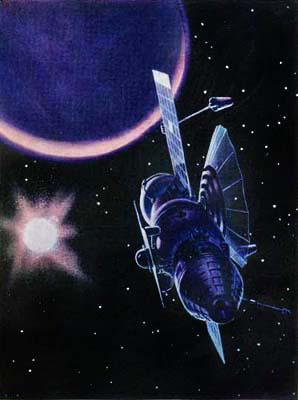
Sokolov Venera-4 Venus
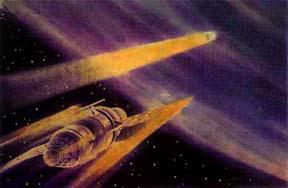
Sokolov Venera-4 approaches the mysterious planet
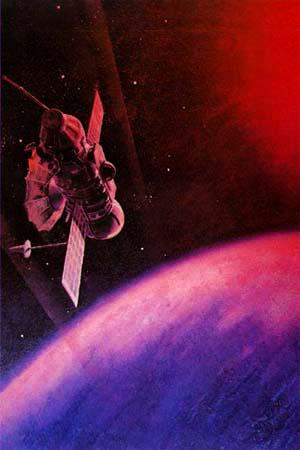
Leonov, A. Sokolov AHEAD OF VENUS
Left behind nearly a hundred million kilometers of space ways. Ahead - a Venus. At very great similarity in size and mass of Venus and the Earth, this planet many dramatically different from ours, including the absence of a magnetic field and a surprisingly slow rotation around its axis (a day on Venus lasts about 243 Earth days!), And, moreover, still in the direction opposite to the rotation Earth and other planets. The winds are blowing in the atmosphere of Venus on Earth with unprecedented speed - up to 100 meters per second ...
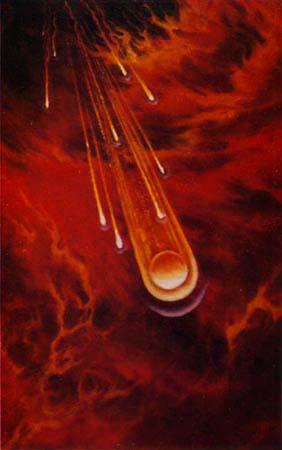
Sokolov in the Venusian atmosphere
It breaks through the atmosphere mysterious planet lander automatic station "Venera-9". It will take a little over an hour, and people will see even hitherto unprecedented - TV images of the Venusian surface.
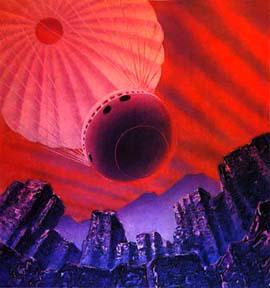
Sokolov parachute in the atmosphere of Venus
Now the lander, supported by parachute from a heat-resistant fabric that can withstand the temperature at which the melt lead, fall to the surface of Venus. For the first time such a landing carried Soviet automatic station "Venera-7" December 15, 1970. Data from the Soviet automatic station "Venus", revealed that the planet's atmosphere is composed almost entirely of carbon dioxide and the temperature at the surface - about five hundred degrees of heat at a pressure of about one hundred atmospheres.
Successive studies of Venus Soviet space interplanetary station "Venera-1" - "Venus-8" have enabled scientists to build up a wealth of material about the natural environment and features of the atmosphere of Venus. As a result of data processing made possible the creation of the middle of the seventies, new, more advanced automatic stations "Venera-9" and "Venera-10". People will see even hitherto unprecedented - TV images of the Venusian surface. For the first time in human history.
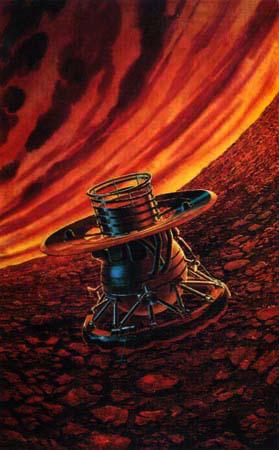
Sokolov at Venus' surface
October 22, 1975 interplanetary automatic station "Venera-9", breaking the 136 days of the flight of more than 300 million kilometers, was launched into orbit around Venus, and became the first artificial satellite of the planet Venus.
Station lander made a soft landing on the surface of Venus. During reduction unit and for 53 minutes after landing with the help of the equipment installed on it carried out the study of the atmosphere and the planet's surface, and send the TV picture landing site.
The signals from the lander to take on board an artificial satellite of Venus and relayed to Earth. After three days on the surface of Venus made a soft landing lander "Venera-10", which is transmitted to Earth television panorama of the other parts of the world.
- Documentaries cosmonaut Leonov and his friend Sokolov. This is the real picture of space, much of which is drawn a person who saw the cosmos with their own eyes. This is not a pseudo-scientific nonsense ignorant Americans and illustrated scientific predstavleniyanashego recent past. Each painting is technically verified iosnovana on a strictly scientific concepts.
This is not fantasy, but an eyewitness - a person sees as the Cosmos and that's what was our - Russian Soviet Way to the Stars.

Sokolov SUNRISE man-made star - the first satellite went into orbit
Release of man-made stars in orbit. It will take a little more time after separation from the last stage of the launch vehicle fairing and reset, and the satellite will take up the planned program of research and experiments. Call Sign satellite will soon hear the whole world and the wider world will know the Russian word "Sputnik".

Sokolov is finished!
The first artificial Earth satellite went into orbit and oriented in space. Mankind in Space.

Sokolov MORNING SPACE AGE
That was the start of the first satellite - the result of the work of tens of thousands of Soviet people and brilliant economic and scientific planning.

Sokolov artificial planet "DREAM»

Leonov, A. Sokolov
"East" of the planet

Sokolov Leonov Gagarin "Beauty is what!»

Leonov BLUE ZONE
This phenomenon is observed and sketched from nature cosmonaut Leonov: rainbow halo over the wide, sharply defined zone stretches over the horizon a bluish layer. And through a translucent reddish stars. What is this phenomenon - is not clear.

Leonov space probe returns to Earth
The descent from orbit is very complicated: melting outer skin, bright red fire burning behind the glass windows, burned the radio antenna, growing congestion, and inside of the ship - a man.

Leonov ahead of the Earth

Leonov above the Black Sea
Another unusual "self-portrait" cosmonaut Alexei Leonov - he came out of the gateway spacecraft into space just above the Black Sea.

Sokolov HIGHEST HOMELAND FLAG
All nearest celestial bodies - the Moon, Mars, Venus was the first time in history reached ssovetskimi spacecraft.

Sokolov FIRST ON THE MOON
September 14, 1959 for the first time in history a spacecraft has reached the surface of another celestial body - station "Luna 2" made a hard landing on the lunar surface east of the "Sea of Serenity", near the craters Aristides, Archimedes, and Autolycus.
"Luna 2" brought to the moon pennant with the emblem of our country and the inscription: "The USSR, in September 1959". Then the Moon was launched by a number of Soviet automatic stations series "Luna", which prepared the solution of a soft landing of the container with scientific equipment.

Sokolov MOON PHOTOGRAPHER
October 6, 1959. Near Moon - automatic station "Luna-3". The optical system of the station good "looks" side of the moon, hidden from the terrestrial observer. The first was carried out and a television picture transmission distances of hundreds of thousands of kilometers.
Tremendous prospects opened up astronomy, which had the opportunity to bring their devices to the heavenly bodies. Hidden from the people side of the Moon was also similar and unlike the previously known side. On the reverse side of the moon dominates the continental shield with a high density of craters and no vast "sea" areas specific to the visible side of the Moon.
After the flight, "Luna-3" was still nesfotografirovannym segment was out of sight of camera lenses. This part of the moon photographed station "Zond-3" in 1965, which allowed our scientists to develop the first globe of the moon.

Leonov RETURN PROBE
Automatic station series "Probe" occupy an important place in the Soviet space program, station igralya role of test benches, but who are experiencing various components of spacecraft and perfected modes of flight, which is expected in future developments and projects overshenstvovaniya methods of navigation in deep space. In particular, several stations "Probe" circled the moon and photographed its reverse side with a soft landing and return the unit returned to Earth for devices with high speed. Such a mission was at the station "Zond-S» - «Zond 8" launched into circled the moon in order to develop technical means of research on the flight path, photographing the Moon. The return of these stations was conducted in two slopes: ballistic, with a splashdown in the Indian Ocean, and managed, with landing on the territory of the Soviet Union. The return of one of the "probe" and shown in the picture.
The device with the escape velocity enters the Earth's atmosphere, then portion of braking, where the rate will be significantly reduced. In a couple of minutes, it will open the parachute system - and "probe" will make a soft landing.

Sokolov Luna 4 start of braking
Several spacecraft from the station Luna 4 practiced technique soft landing on another cosmic body.

Sokolov soft landing station Luna-9
February 3, 1966 Soviet automatic station "Luna-9" for the first time in the history of implemented soft landing on another cosmic body - the moon. With the help of a television system installed on the station in the world have taken pictures of the lunar surface. First.

Sokolov first lunar SATELLITE
The solution of some problems of the science of the moon required a long stay near the Moon instrumentation and coverage measurements of significant spaces. And our natural satellite had its own satellite. This happened in April 1966 when the lunar orbit was deduced Soviet automatic station "Luna-10".
The satellite weighing 245 kilograms of moon represented a sealed container carrying the scientific equipment. Over 450 rpm, which makes satellite around the moon, science has a lot of new information about the gravitational and magnetic fields of the Moon, on the preliminary composition of the lunar soil and the radioactivity of the magnetic loop of the Earth, which has repeatedly provided to the moon with her companion.

Leonov, A. Sokolov MOON FLOWER
Eternal witness stayed on the Moon near the Ocean of Storms Soviet "flower" - "Luna-9" to reveal the petals of transmit antennas at the beginning of 1966

Leonov, A. Sokolov, "Luna-16" - space geology
Electric drill, controlled by commands from Earth, cutting into the lunar soil. Another few minutes, and a sample of rock from another celestial body is moved by the will of man to the container space rocket that will take her to the ground. This historic event took place in September 1970.
"Luna-16" - the prototype of the automatic stations, which in the future will be to explore the moon and planets in different areas, pick up rocks from different depths and bring to Earth a substance with other celestial bodies.

Leonov BUR EXPLORING THE SEA OF ABUNDANCE
September 12, 1970 to our natural satellite has gone Soviet automatic station "Luna-16" with a landing stage, the drilling rig and space rocket launch for the return.

Sokolov "Moon" starts with the Moon
Made a soft landing in the "Sea of Fertility", the station made the drilling of rocks, removed the samples of lunar soil, pack them in an airtight container, and then launched from the Moon to the Earth. This exciting moment, and captured on film. The Moon is forever remained lander, a sort of witness this important step in the development of the Soviet space automation. Lunar soil a few days later he entered the order of scientists who were waiting with great impatience.
Note that in February 1972 the station "Luna-20" once again made the delivery of the soil from the moon, but this time from a more remote places in the mountainous region. If the drill station "Luna-16" deep in the lunar rocks by 35 centimeters, the drilling of the lunar soil at the station "Luna-24" in August 1976 was carried out in the "Sea of Crises" at a depth of about two meters. Eight strips of dredge device fundamentally new design, as the hose, cover the soil column intake as you move into the interior of the drill bit rock. After the end of the drill pipe, and with these tapes particulate soil wound onto the drum, and the drum-like reel with cable was placed in a sealed vial recovery vehicle. There is no doubt that the tried and tested in practice, delivery method of soil by automatic means promising.

Leonov, A. Sokolov Lunokhod TO THE MOON
November 1970. In the annals of space exploration entered a new bright page: the Moon makes a soft landing Soviet automatic space station "Luna-17". After several days of flight and complicated maneuvers carried out in the region near the Moon, "Luna-17" sank on the moon and brought to the world's first self-propelled machine Space Research "Lunohod- 1».

Leonov, A. Sokolov FIRST STEPS "Lunokhod-1»
"Luna-17" made a soft landing on the lunar surface illuminated by the sun. 28 9:00 Moscow time on 17 November 1970. Mare Imbrium. From the landing stage station on a special ramp on the moon goes automatic self-propelled machine "Lunokhod-1».

Sokolov THROUGH Crater
The crew, which controls the movement and the work of the rover from Earth, skillfully leads from a distance of about 400,000 kilometers of self-moving vehicle through obstacles.

Leonov, A. Sokolov, the first night of the "Lunokhod-1»
Having successfully completed the first phase of a unique space experiment on the creation and use of lunar transportation system. We passed a few hundred meters over rough terrain through the craters, ridges and lunar rocks. On the land is transferred to a large volume of scientific information.
On the moon, it was night. Lunokhod installed in a stationary position-oriented, the solar panel is closed. Environmental conditions are harsh: on top of the Lunokhod - "black" and "cold" space on the lunar surface temperature of minus 140 degrees and in the instrument compartment moonwalker - earth, "room" temperature - isotope heaters work there ...

Sokolov lunar laser ranging
On the night of the moon, only the faint light reflected by the Earth, falls on the surface. But a powerful laser beam sent from Earth, cutting through the darkness and cold of space, a second later reached a special reflector mounted on the Lunokhod and reflected back to Earth. Scientists determine the exact distance between the Earth and the Moon. Now it is necessary to clarify the laws of motion of celestial bodies, the theory of motion of the moon ...

Leonov MOON PIC

Leonov crater CHAIN
One of the mysteries of the lunar surface - rather numerous crater chains. They can be seen from Earth through telescopes. Some of these conversations reveal a pattern: each successive area of the crater in the chain is approximately half the area of the previous one. The distance between the centers of the craters are also subject to the laws, close to a geometric progression.

Leonov, A. Sokolov MOON luminescent
Magical glow observed at times in some areas of the moon, not a fantasy artists. Apparently, the brief flash of light, the appearance of the lunar surface changes color of dark spots Finally, luminescence, shown in the picture - is the result of the bombardment of the lunar surface flow of plasma ejected from the sun during flares.
Perhaps the solar particles reach the Moon, "stimulate" certain lunar minerals, and then the energy emitted by them in visible light.
Mars and Venus
The next step after the Moon, began the study of Mars and Venus - the surface for the first time in the world reached the Soviet space station.

Sokolov AHEAD - MARS

Leonov, A. Sokolov landing on Mars
The lander station for the first time in history in December 1971 made a soft landing on the surface - "Mars-2", soon followed by a successful "primarsilsya" his twin - "Mars-3". Their orbital compartments were the first in the history of artificial satellites of Mars, which were simultaneously repeater stations for landers.

Sokolov soft landing on Mars
Landing on Mars system, created in the world - this is our date. Many more sophisticated devices, breaking the abyss of cosmic distances, time and time again will storm Mars. The spacecraft sent from Earth, will explore the mysterious planet to seek answers to the question "Is there life on Mars? Do I have to fly a man? »
And if it appears necessary, then to Mars will take the start of manned spacecraft. Until then it will be thoroughly studied automatic machines.
"Venera-1" and "Venera-2" were fired for "exploration path" 12.2.1961g respectively. and 12.11.1965g. The spacecraft "Venera-3" was launched on 11.16.1965 "Venera-3" has already had on its board lander. Landing on the planet's surface was provided with the help of a parachute system. On board this device, as in the case of the first "honesty" and "Mars", directed for the first time in the world to the surface of another celestial body was a pennant with the emblem of the Soviet Union. 01/03/1966 spacecraft has reached the surface of Venus, having carried out the world's first flight to another planet. However, the conditions of Venus proved to be extremely hard - to the surface of melted lead. The monstrous pressure and temperature brought "Venera-3" and "Venus-4" from the system. Fully successful was only a soft landing "Venus-5", but she sat up in the mountains, and the "classical" planet's surface has already reached "Venera-7" of course, the first time in history.
All other triggers our "Venus" 8-12 was completely successful.

Sokolov Venera-4 Venus

Sokolov Venera-4 approaches the mysterious planet

Leonov, A. Sokolov AHEAD OF VENUS
Left behind nearly a hundred million kilometers of space ways. Ahead - a Venus. At very great similarity in size and mass of Venus and the Earth, this planet many dramatically different from ours, including the absence of a magnetic field and a surprisingly slow rotation around its axis (a day on Venus lasts about 243 Earth days!), And, moreover, still in the direction opposite to the rotation Earth and other planets. The winds are blowing in the atmosphere of Venus on Earth with unprecedented speed - up to 100 meters per second ...

Sokolov in the Venusian atmosphere
It breaks through the atmosphere mysterious planet lander automatic station "Venera-9". It will take a little over an hour, and people will see even hitherto unprecedented - TV images of the Venusian surface.

Sokolov parachute in the atmosphere of Venus
Now the lander, supported by parachute from a heat-resistant fabric that can withstand the temperature at which the melt lead, fall to the surface of Venus. For the first time such a landing carried Soviet automatic station "Venera-7" December 15, 1970. Data from the Soviet automatic station "Venus", revealed that the planet's atmosphere is composed almost entirely of carbon dioxide and the temperature at the surface - about five hundred degrees of heat at a pressure of about one hundred atmospheres.
Successive studies of Venus Soviet space interplanetary station "Venera-1" - "Venus-8" have enabled scientists to build up a wealth of material about the natural environment and features of the atmosphere of Venus. As a result of data processing made possible the creation of the middle of the seventies, new, more advanced automatic stations "Venera-9" and "Venera-10". People will see even hitherto unprecedented - TV images of the Venusian surface. For the first time in human history.

Sokolov at Venus' surface
October 22, 1975 interplanetary automatic station "Venera-9", breaking the 136 days of the flight of more than 300 million kilometers, was launched into orbit around Venus, and became the first artificial satellite of the planet Venus.
Station lander made a soft landing on the surface of Venus. During reduction unit and for 53 minutes after landing with the help of the equipment installed on it carried out the study of the atmosphere and the planet's surface, and send the TV picture landing site.
The signals from the lander to take on board an artificial satellite of Venus and relayed to Earth. After three days on the surface of Venus made a soft landing lander "Venera-10", which is transmitted to Earth television panorama of the other parts of the world.

